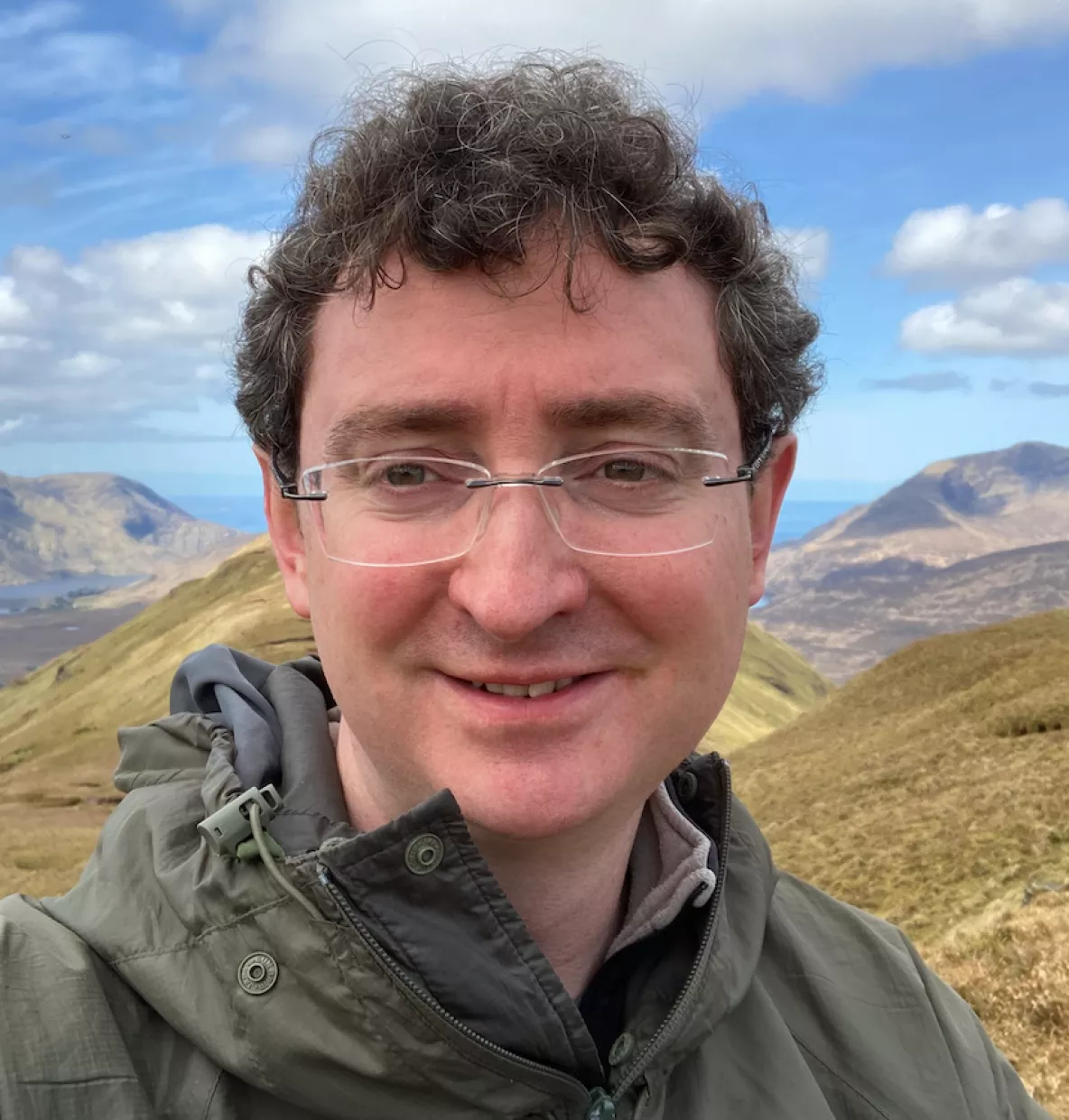
A University of Limerick academic has been named among a select group of experts chosen to advise the Government on Irish-language placenames.
Dr Aengus Ó Fionnagáin, Head of Irish Language Studies at UL, is one of 11 experts appointed to the new Placenames Committee by the Minister for Tourism, Culture, Arts, Gaeltacht, Sport and Media, Catherine Martin and Minister of State Thomas Byrne.
Established under the Official Languages Act, the Placenames Committee’s chief responsibility is to advise on the declaration of Irish versions of Irish placenames. The advice provided by the committee is based on an examination of research carried out by the Department’s Placenames Branch.
Dr Ó Fionnagáin, who is also Vice-President of the Society for Names Studies in Britain and Ireland, explains: “I expect we’ll be comparing lots of different placenames around the country, to try to ensure all the names which are given official status and end up on road signs etc., are consistent with the evidence as well as the normal spelling standards of modern Irish.”
Commenting on the significance of the committee and its work, Minister of State Thomas Byrne said:
“The country's placenames are an extremely valuable part of our heritage, deeply rooted in our people's sense of Irishness. The new committee, with the support of the Placenames Branch in my department, has a vital role to play in terms of advising me on the recommended Irish versions of the State's placenames.”
For Dr Ó Fionnagáin, who has been fascinated by Irish placenames since childhood, the appointment is a great honour as well as a full circle moment.
“I was always intrigued by the list of townlands the priest used to announce at the end of mass when I was a child – these would be the areas of the parish he would be visiting in the coming week,” he explains.
“It was clear to me that there was a lot of information and meaning bound up with these names – I would have connected them in my own mind to the Irish words which I heard at home and from neighbours all the time, even though they were speaking English.
“I knew there was much more to know, and I wanted to know more – that is how it started.”
That curiosity informed Dr Ó Fionnagáin’s final-year project during his undergraduate degree in Irish and Geography, collecting local placenames in his own area, and later, his PhD – a study of 276 townland names in Co. Westmeath.
“It involved creating a profile of all the different spellings of each placename, extracting the evidence from a wide variety of English, Irish, and Latin sources. From this evidence it was usually possible to identify the original Irish form of each name … and trace its development over time,” he explains.
“Another important factor is relating the names to the surrounding landscape, as many Irish placenames started out as descriptions of notable local features, natural and manmade.”
Dr Ó Fionnagáin’s studies would lead to a decades-long career in education and research, in which he has been able to share his expertise at the highest levels. As well publishing his research in academic journals, contributing to the media, and presenting at both local talks and international conferences; he has been involved in numerous projects all over the country including Logainm.ie, established as an official database and archive of placenames in Ireland. Most recently, he collaborated with UL Geography colleagues on a project in partnership with Queen’s University Belfast, OS200: Digitally Re-Mapping Ireland’s Ordnance Survey Heritage, to make historic Ordnance Survey maps and texts freely accessible in one digital resource.
Dr Ó Fionnagáin says the work of the committee, along with the broader reach of the Official Languages Act, will play an important role in ensuring the Irish language continues to thrive.
“The first Official Languages Act (2003) gave the Irish forms of placenames equal status with that of the anglicised forms for the first time. I think that was a very important step in recognising the Irish language’s central position in Irish life, today, and over a very long time. And, of course, the Irish-language forms of the names, in a great many cases, are the original forms of the names, with a history stretching back 1000 years or more,” he explains.
“I think the fact that the Irish forms of placenames are written in italics on road signage reinforces this idea that Irish is ancillary or even inferior to English. That is something I would really like to see changed.”
What remains to be achieved, he says, is “a recognition by public institutions that Irish is a living language that people want to use to do their business like any other”.
“For that to happen we need to see a good scattering of people throughout the public service and beyond, who have competence in written and spoken Irish and who use Irish as a normal part of their duties … There are many pressures on Irish, but this is one we can most easily do something about.”
Looking ahead to his new role, Dr Ó Fionnagáin says: “It is great to be recognised as such at a national level, and I look forward to making a contribution to the committee and to learning from the other members as well.”